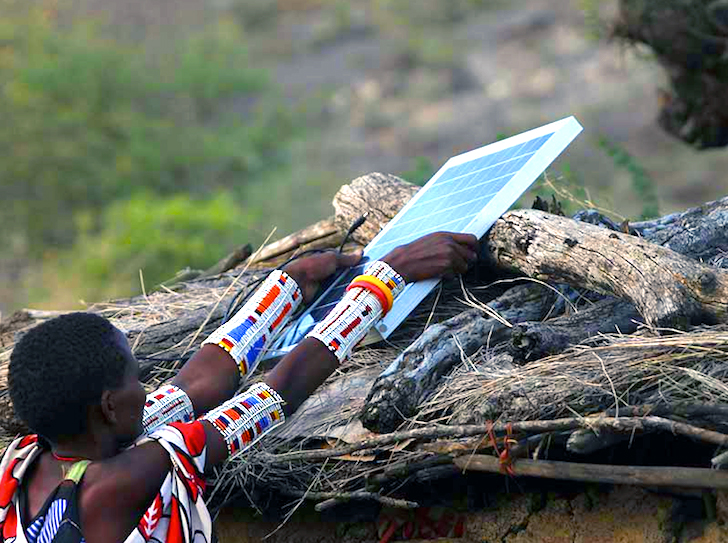Governments, development banks and businesses are providing less than 1% of the money needed each year to wean 3 billion people off dirty, health-harming cooking by an international deadline of 2030, new data on energy access showed on Tuesday.
In 2017, the latest figures available, funding commitments for clean cooking in 20 countries in sub-Saharan Africa and Asia with the largest needs plummeted by 73%, to $32 million, from the average in the previous two years, found a report tracking finance towards global goals on energy.
An annual investment of $4.4 billion is required to move to modern cooking methods the nearly 40% of the world’s people who still use traditional fuels such as wood, charcoal, dung or kerosene, often in smoky indoor environments, researchers said.
The World Health Organization estimates that household air pollution kills about 4 million people each year, many of them women and children, through ailments such as heart and lung disease and cancer.
Olivia Coldrey, lead finance specialist with Sustainable Energy for All, a U.N.-linked body that co-produced the report, highlighted a “continued lack of global effort” to tackle low access to less-polluting fuels and more efficient stoves.
“This is really an environmental and public health emergency,” she told the Thomson Reuters Foundation, noting that investment in cleaner cooking was “orders of magnitude away from what it needs to be”.
International donor projects to boost clean cooking were fragmented, often short-term and tended to focus on single countries and technologies, she added.
Barbara Buchner, executive director of climate finance at the Climate Policy Initiative, a think tank that partnered on the annual report, called for “a paradigm shift” in thinking, to focus on ensuring new fuel supplies as well as cleaner stoves.
Governments need to set stronger targets, and allocate large budgets to help poor households afford the upfront costs of moving to improved cooking methods, she added.
Riccardo Puliti, global director for energy and extractive industries at the World Bank, said clean cooking should be “a political, economic and environmental priority” because, without urgent action, other global goals on health, gender and climate change would be missed.
Last month, at a U.N. climate summit, the bank unveiled plans for a $500-million “Clean Cooking Fund”, supported by the Netherlands, Norway, Denmark and Britain. It aims to increase investment and back businesses delivering solutions.
The report said more efficient stoves that use wood and other biomass received the greatest amount of finance in 2017.
Private-sector finance for clean cooking showed “green shoots”, with investment rising to about $21 million in 2017 and accounting for two-thirds of all funding. Kenya grabbed the lion’s share, at more than 60%, of all commitments for clean cooking that year.
The report noted that, due to the difficulty of monitoring domestic public spending, its analysis likely under-represented financing in some developing states that have prioritised clean cooking, such as India and Indonesia.
Coldrey and Buchner urged development banks to work on strategies for large-scale programmes needed to close the clean cooking gap.
That will require a different type of support from traditional backing for big energy infrastructure projects, they noted.
A similar push is needed to ramp up backing for off-grid renewable power and mini-grid systems that target the poorest among the 840 million people still living without electricity, they added.
The data for 2017 showed that investment in these solutions was still a tiny proportion – just 1.2% – of total finance for electricity access and stood at $430 million in 2017, with Kenya, Tanzania and Uganda garnering 56% of that.
While innovative models for providing off-grid power have proliferated, they are not yet being implemented widely enough as the market is still learning what works, said Buchner.
The World Bank’s Puliti said its off-grid portfolio was growing rapidly, with the bank putting $600 million into mini-grids and solar home systems in the 2018 fiscal year.
It supports the largest off-grid programme in the world in Bangladesh, he noted, powering 2.5 million households through 1.2 million solar home systems, as well as solar irrigation pumps and mini-grids, and 1.4 million efficient cookstoves.
Overall, finance to boost electricity access in the 20 countries where nearly four-fifths of those who lack a modern energy supply live increased to $36 billion in 2017, after stagnating at $30 billion in 2015 and 2016.
But only an estimated one-third of that spending went to provide electric power in homes.
‘UNACCEPTABLE’ COAL
Some of the funding to boost electricity access paid for grid-connected fossil fuel plants, mostly coal-powered, although such funding dropped by about a fifth from the two previous years, to $6.6 billion in 2017.
The money financed four coal plants in Bangladesh and the Philippines, with 60% of all coal money that year coming from the export-import banks of India and China, the report said.
Given scientific evidence that carbon emissions must be cut further and faster to curb the accelerating impacts of climate change, it is “unacceptable” for any money to be going into that sector, said Coldrey.
She also noted that four out of the 13 sub-Saharan African countries that have high levels of people living without electric power had seen commitments to provide it decline in 2017, while 10 countries got less than $300 million each.
The delay in boosting electrification rates in the region will hold back economic growth, an effect that will become more pronounced as populations expand, she said.
“The longer we leave this hole financially, the bigger it’s going to be to fix later,” she said.


